Speech by the Mayor
Shanghai, located at the foreground of the Yangtze River Delta, the strategic passage from Yangtze River into East China Sea, and the thoroughfare along the sea route of the Far East, is a sea-port city of great renown.
Since the first day when the port trade was allowed in the city, Shanghai has become a gathering place for all the merchants and talents, boasting a sort of" Shanghai culture" mixing an array of Chinese and exotic characters, for which the city gained the reputation as the" Oriental Pearl".
Shanghai is the largest economic center with well founded infrastructure, strong industrial basis, advanced science and technology, and concentrated industry and commerce. Shanghai has utilized 0.06% of the country's land, 1% of China's population to generate 5% the country's GDP, 1/4 of the port's foreign trade volume.
The containership handling throughput of Shanghai port has reached the third largest worldwide, and the cargo volume the global number one, cementing Shanghai a very important position in China's economic growth.
Shanghai is also at the forefront of China's economic reform. Since China's opening up and reform, especially since the development of Pudong as an open New Area, Shanghai's foreign economy has been robustly developing, with ever-increasing openness as well as its pace of globalization. The city's growing economic strength has enabled it to be a window and a bridge for China to go global and the world to know China better.
Shanghai is the city with best investment environment. Shanghai Municipal People's Government is committed to build itself as a service-oriented, responsible and law-ruled government. It will accelerate the transform of government responsibilities, promote innovation among government administration systems, improve the investment environment, and create a fair, open and just market for home and overseas investors.
From now on, Shanghai will, under the strategic guidance of the central government and with full implementation of the scientific concept of development, continue to strive towards the goal of building an international economic, trade, finance, and shipping center by 2020. The city will make great strides on its way to become a modern socialist metropolis. For this purpose, Shanghai will be more open-armed to embrace friends both at home and from abroad who share the same grand wish to invest and develop in the city, in which way that a new chapter of orchestra will be written under the joint theme of harmonious growth and mutual prosperity.
I . Survey
i. Geographical Location
Shanghai is situated at 31'14' north latitude and 121'29' east longitude. It is in the east of Yangtze River Delta, also assumes the central location along China's coastal line. The city has a total area of 6,340.5 square kilometers. In the 16th century, Shanghai became the national center of textile & handicraft industry. By the mid-19th century, Shanghai has become a major trading port, China's largest industrial city and the Financial Center in the Far East. With its ever increasing dynamism, Shanghai has become one of the most important economic hubs of the country.
ii. Climate
With a pleasant northern subtropical maritime monsoon climate, Shanghai enjoys four distinct seasons, generous sunshine and abundant rainfall every year. The weather is generally warm and moist, and its spring and autumn are relatively short comparing with the summer and winter. In 2005, the average annual temperature was 17.5 degrees Celsius. The city had a total sunshine time of 1,778.3 hours in 2005 and received a total rainfall of 1,254.9 millimeters. However, about 70% of the precipitation came during the May-September flood season.
iii. Population and Nationalites
By the end of 2005, Shanghai's residential population had reached 17.78 million, and among them, 11.4894 million are non-farmers, while 2.1132million live on farms. The majority is of the Han nationality.
iv. Urban Infrastructure and Transportation
Milestone progress has been made in the building of" Three Ports and Two Networks", referring to the Deep Water Port, Aviation Port, and Information Port, railway and highway networks respectively, and the city's spill-over economic effect has been therefore enhanced.
Airport
Shanghai has two airports off the city, namely, Hongqiao Airport and Pudong Airport. In the year of 2005, 375,100 flights took off and landed in the two airports, carrying 41.3916 million passengers into and off the city. Among them, 26.7987 million were by domestic lines, and 14.5929 million by international and regional lines. In 2005, Shanghai maintained flight connections with 181 cities and regions including 98 overseas cities and districts. Shanghai provides lines with all the rest of China, including Hongkong and Macao SARs. There are 65 airline companies operating in Shanghai, of which 52 are foreign airlines. In 2005, the total amount of airborne cargo through the Shanghai airports reached 2.21 million tons, ranking Shanghai among the Top 10 airports in the world.
Sea-Port
Shanghai is China's top sea port. Up to the end of 2005, there are 28 container docks, and 124 deep-water berths of 10,000 tonnages each. Shanghai Port has established business connections with over 500 ports of 200 countries/regions.
It operated 16 international container shipping routes with business contacts to 12 navigating zones around the world. In 2005, Shanghai Port handled 443 million tons of cargo, making it the largest port in the world. In the same year, the city's port handled 18.084 million TEUs, ranked the third largest worldwide.
Shanghai started the construction of Yangshan Deepwater Port in 2002.
On December 10, 2005, the first phase of Yangshan Deepwater Port was completed.
Five 70-100 thousand tonnage berths of the first phase have been built and come into operation, with a capacity to deal with over three million TEUs each year and it offers all-weather service to any types of largest containerships. Yangshan Deep Water Port, also houses the Yangshan Bonded Zone, which is the fi rst of its kind in China, integrating all the functions as a port, a bonded zone, an export processing zone and a bonded logistics zone.
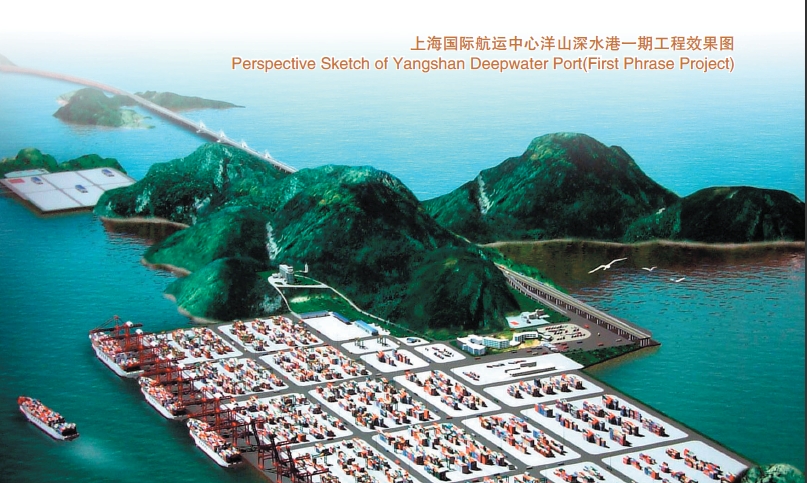
Roads
Up to the end of 2005, Shanghai has 560 km expressways, carrying 327 million tons of cargo and 24.68 million passengers. The network of roads has linked Shanghai with 392 counties under 104 prefectures in the other provinces and municipalities.
In 2005, the metro system in Shanghai has extended to 123 km.
By the end of 2005, there are 940 bus routes with a total route length of 21,794.45 km. The total road surface reached 75.8 million square meters, and the total length 8,110 km. The density of road network is 128 km. per 100 sq. km.
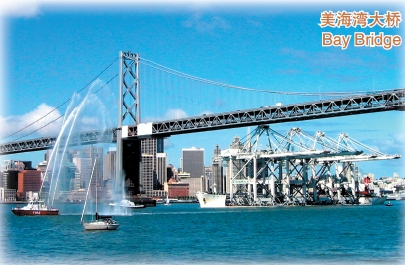
Railways
In 2005, the trains dispatched by Shanghai railway authorities covered 269.1 kilometers, transporting 12.783 million tons of cargo, and 43.131 million passengers.
Shanghai Railway Station has a daily capacity of transporting 110,000 departing passengers on average.
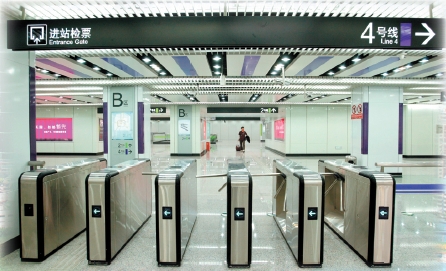
Finance and Insurance
Shanghai has basically formed the financial market system with the markets of currency, capital, foreign exchange, futures, gold and equity as the main part. The total assets of all the financial institutions have reached 3.2 trillion RMB, accounting for 9% of that of the nation. In 2005, the total volume of the financial market exchange was 35 trillion RMB. By the end of 2005, Shanghai had been home to 610 financial institutions, which was 3.3 times as many as in 2001. Among them, 231 were banking institutions, 110 security ones, and 269 of insurance nature. Over 30 financial institutions, which play an important role in promoting the cohesive and traditional functions of Shanghai as an international financial center, such as the Gold Exchange, China Union Pay and the business operation head-offices of national financial institutions, such as credit card centers, bills centers, fund operation centers, data centers, etc., and over 10 new-type institutions such as currency brokerage companies, agricultural insurance companies, auto financing companies, assets management companies, etc.
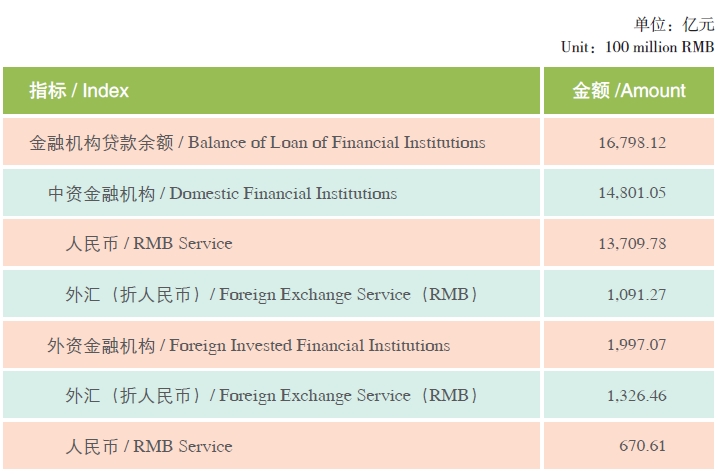
In 2005, Shanghai called home to 320 foreign-invested financial institutions. The capital assets of all the foreign-invested banks have accounted for 50% of the banking industry in China. The capital assets plus the loan volume in the city have accounted for 10% share of the local market. 28 foreign invested banks have chosen Shanghai as the location for major reporting bank in China, accounting for 70% of the total number of the China-based foreign-invested major reporting banks. The premium generated by foreign insurance companies has taken up to 17% of the market.
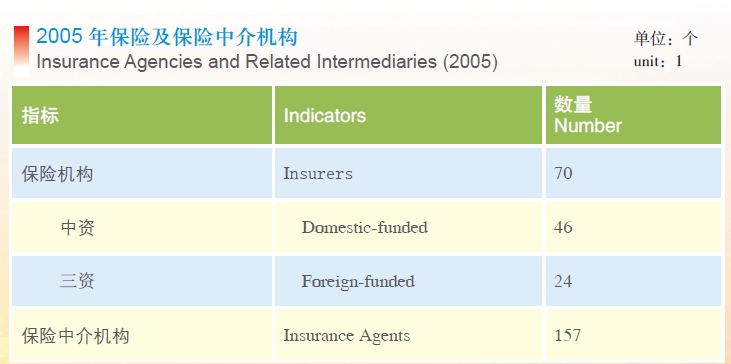
Telecommunications
By the end of 2005, Shanghai had 9.967 million fixed line telephone users(penetration rate:56.1%), 1.884 million Smart Phone users, 6.85 million household phone users (penetration rate over 100%), 14.442 million mobile phone subscribers (penetration rate:81.2%),and cable TV subscribers of 4.273 million (penetration rate:67%).
Internet
Shanghai's Internet international connection bandwidth has been expanded to 30G. There have been 8.03 million Internet users and 2.474 million subscribers to broadband access in the city, among which 2.226 million are household users. Currently, more than 1,300TB of data streamed through the city's WWW Exchange Center, with the highest daily data flow hitting 5 TB. The total exchange of data flow through routers could reach 26 Class B IP addresses, with the bandwidth up to 4.9G.
v. International Relations
Sister cities
By the end of the year, the city had established sister-City ties and long term friendly exchange programs with 66 cities (provinces, states and regions) in 50 countries around the world.

International Exhibitions,
By the end of 2005, the floor area of the city's exhibition halls reached 3.76 million square meters. In the year of 2005, Shanghai hosted 276 exhibitions, including the 17th IBLAC Meeting, the 7th Shanghai International Industrial Fair, the 15th East China Fair, the 4th Shanghai International Sourcing Fair, 2005 World Bus Fair (Asia).
Exhibition giants, such as Deutche Messe AG, Fiera Milano of Italy and Messe Frankfurt GmbH, have set up their branches in the city.
Since 1989, Shanghai has organized 18 sessions of IBLAC Meeting. On November 5, 2006, the 18th IBLAC Meeting has attracted over 30 Chairmans and CEOs of MNCs to speak on the meeting, contributing their advices for Shanghai's further development, demonstrating their firm confidence in Shanghai's future.
Shanghai International Industry Fair
Since 2006, Shanghai International Industry Fair has been upgraded to China International Industry Fair, the only large size industry exhibition showcasing the latest high tech products and technologies and providing trading floor to the technology and product exchanges. SIF2006 is a reflection of the country's development plan, showcasing the machine tools, industry automation, environmental protection, energy and IT technology and machinery home and abroad. Its grand scale and high degree of professionalism make it one of the most important international events for the equipment manufacturing industry of China.
East China Fair (ECF)
East China Fair (ECF) is co-sponsored by 9 provinces and cities, namely Shanghai, Jiangsu, Zhejiang, Fujian, Jiangxi, Shandong Province and two cities Nanjing and Ningbo.
Since 1991, East China Fairs have been held 16 times successfully. The 16th ECF designated four exhibition areas of garment, home textiles, decorations, daily consumables, where the exhibiting enterprises were from 26 provinces and cities. The ECF has become the largest regional international economic fair in terms of its scale, number of exhibitors, scope of influence and its trade volume.
China International Sourcing Fair (Shanghai)
In 2006, the first China International Sourcing Fair (Shanghai) has been co organized by Ministry of Commerce & Shanghai Municipal People's Government, supported by the foreign trade & economic cooperation authorities from more than 18 provinces and cities in China, including Tianjin, Chongqing, Shan'xi, Hubei, Yunnan, Shandong, Zhejiang, Jiangsu, Liaoning, Fujian, Sichuan, Guangdong, Hebei, Hainan, Jiangxi, Beijing, Anhui and Xinjiang. This CISF, originally named Shanghai International Sourcing Conference for the past four years, has become one of the most influential reverse sourcing fair in China.
World Expo 2010
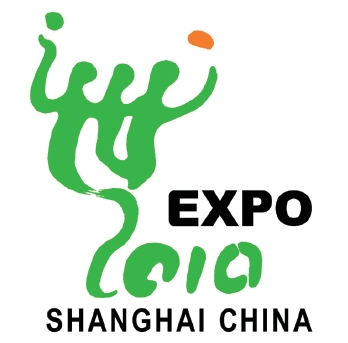
World Expo 2010
On December 3rd, 2003, China has won the bidding to host 2010 World Expo.
The theme of Shanghai World Expo is "Better City, Better Life". From May 1st to October 31st, 2010, the bund area stretching from Nanpu Bridge to Lupu Bridge will be the location for the Expo2010, which will attract 200 countries and international organizations, as well as 70 million people across the world. It is expected that Expo 2010 Shanghai, China will be the successful, wonderful and unforgettable world expo of its kind, expecting the widest possible participation in the history of the World Expositions. Shanghai World Expo will provide extensive business opportunities, including the planning and construction of the Expo zones, the designation of partners and key sponsors, the organization of exhibitions and conferences, tourism, consultation and management services, wholesales and retails, HR services, media industries. 2010 World Expo will be an event for the exchanges of human beings' urban experiences, a symposium on" innovation" and" integration", a time for cross-culture dialogue.
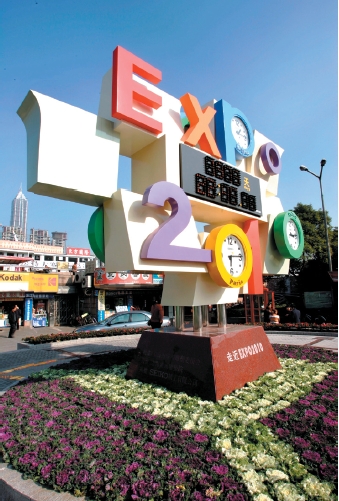
vi. High Education and Science and Reserch Development
As of late 2005, Shanghai had 60 regular institutions of higher learning, including Fudan University, Jiaotong University, Tongji University etc. They enrolled 131,800 undergraduate students for 3-or-4–year programs, making a total population of 442,600 students. The number of newly recruited postgraduates hit 27,700, while 16,700 graduated, 3,230 of them with a doctoral degree and 13,511 with a master's.
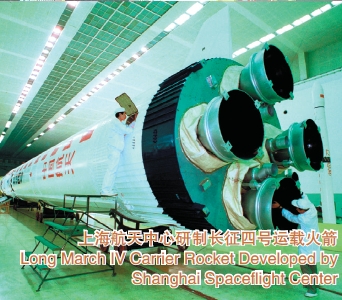
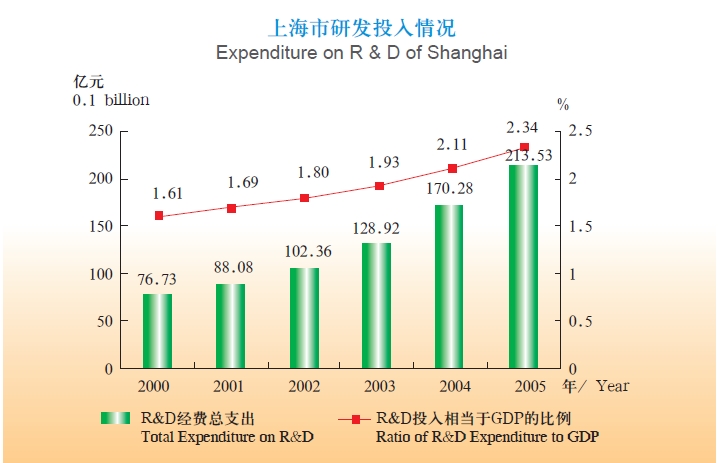
By the end of 2005, the city had 97 academicians with the Chinese Academy of Sciences and 67 academicians of the Chinese Academy of Engineering. In 2005, the city allocated 21.4 billion RMB on R&D expenses, accounting for 2.34% of the city's GDP.
vii. Tourism
Shanghai is a cultural city with long and glorious history. Up to now, Shanghai has retained many historical sites and the rich characteristic botanic gardens from Tang, Song, Yuan, Ming, Qing Dynasties.
Shanghai has more than 1,000 year plus Long Hua Temple, Jing'an Temple constructed in Three Kingdom Times, Yufo(Jade Buddhist) Temple well-known home and abroad, Yu Garden famous for its South China garden style, Confucius Temple in Jiading District, Square Tower and Zui Bai Chi Pond in Songjiang District.
Since 1990s, Shanghai completed a group of functional constructions that enjoy a good reputation, which as part of the enchanting city landscape, showing people a new outlook of Shanghai, including the Bund, People's Square, Oriental Pearl TV Tower, Jin Mao Tower, Nanjing Road Pedestrian Street, Shanghai Museum, Shanghai Grand Theater, Shanghai Urban Planning Exhibition Center, etc. Shanghai provides a complete range of tourism facilities, including 25 five-star hotels, and 52 international tourist agencies. In 2005, Shanghai has received 5.714 million foreign tourists.
Yu Garden
Construction of Yu Garden started in 1559. Its layout features the garden styles of south-of-the-Yangtze region in China during the Ming and Qing Dynasties. Enjoying a lasting reputation as" Wooded Hill in City," the garden is very well preserved. Carved dragons wind across atop the walls, which divide the garden into different scenes.
The pavilions, ponds, man-made stone formations have formed 48 scenic spots in this small garden.
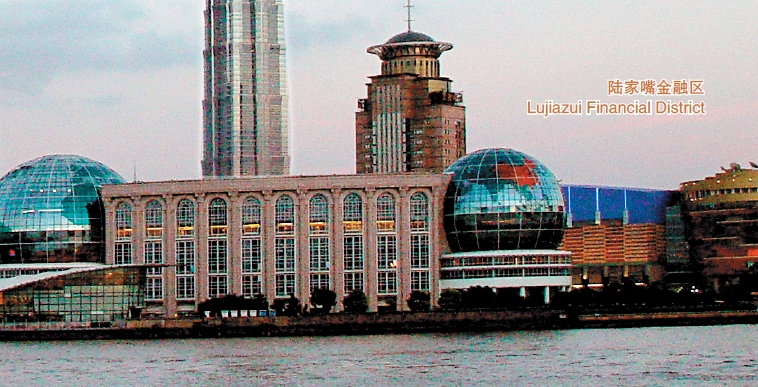
New Bund
The New Bund lies along the west bank of the Huangpu River between the Waibaidu Bridge, also known as Garden Bridge, and Nanpu Bridge. The four-kilometer-long thoroughfare was listed as one of the top 10 new scenes and tourist attractions in the city. Along the Bund, there are buildings of different Chinese and western architectural styles, nicknamed the" contemporary expo of world architectures". This cultural heritage of mankind has epitomized the modern history of Shanghai. At night, with lights on, they look just fantastic.
People's Square
Located at the very center of the city, People's Square is a garden-type open space surrounded by buildings and administrative facilities, as well as cultural activities, transportation and commerce. To its north is the People's Mansion, to its northwest the Shanghai Grand Theater, to its northeast the Shanghai Urban Planning Exhibition Hall, and to its south the Shanghai Museum.
Flanked on both sides by 17-meter-wide greenbelts, People's Avenue goes across the center of the square. The total green areas in the square reach 80,000 square meters. It is an oasis in the city.
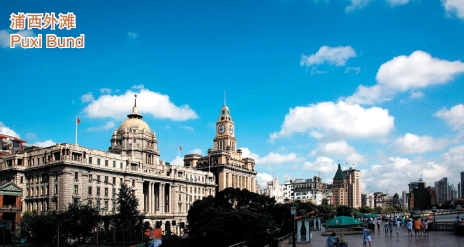
Zhujiajiao Ancient Water Town
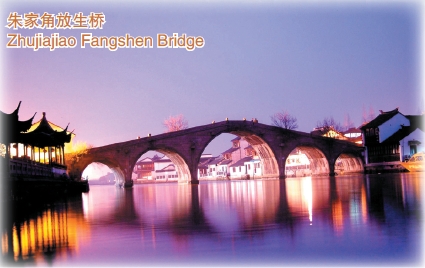
Zhujiajiao Ancient Water Town
Known as the"Shanghai's Venice", Zhujiajiao is a typical ancient water town in the south of the Yangtze River. It first appeared as a village market during the Three-Kingdom Period over 1,700 years ago.
Later, it became a bustling trade town in the Ming Dynasty. Today, visitors can still see many well preserved streets, buildings, and local conditions and customs of the water region dating back to the Ming and Qing dynasties. This is a little quiet town where people can find antiquity, leisure and tranquility.
Special Food and Products in Shanghai
Various Chinese cuisines and the main cuisines of different parts of the world have concentrated in Shanghai, which have given rise to the delicacies of Shanghai through replacement of the old by the new, co-existence or combination. The true Shanghai cuisine includes the household dishes, with traditional Shanghai flavors. In Shanghai, there is a lot of time-honored brands, such as Caosugong Ink, Duoyunxuan Gallery. The dumplings at City Temple, mooncakes at Xinhualou Restaurant, honey of Guanshengyuan Food Company, Big Rabbit milk candies, pear syrup at Yu Garden, vegetarian food at Gongdelin Restaurant are all time-honored special food and snacks in Shanghai.

Related Articles:
Doing Business in Shanghai Municipality of China:I. Survey
Doing Business in Shanghai Municipality of China: III. Investment
Doing Business in Shanghai Municipality of China: IV. Development Zones





